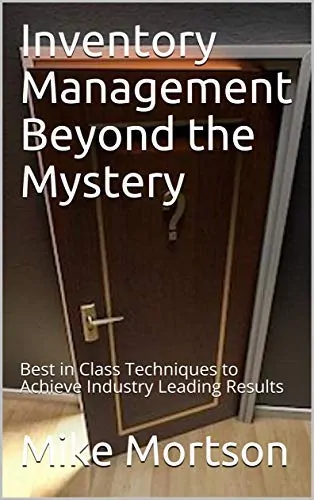Imagine an asset that, instead of contributing to a business’s success, costs it money without producing return, makes it harder to get an accurate picture of performance and otherwise hinders its success.
It’s a scary picture for any business owner or employee—and for many, it’s all too real.
These assets are called ghost assets, and they’re surprisingly common. How do these assets come to haunt a business, and what can be done about them?
They’re certainly a challenge to deal with, but it’s possible through the power of technology and smart asset management.
What Are Ghost Assets?
The name “ghost asset” suggests a supernatural entity that causes havoc—and for many businesses, that’s not far off. A ghost asset is any asset that meets two conditions:
- It’s no longer present, working or otherwise usable.
- It’s still being recorded in inventory and accounting systems.
After an asset has broken, been sold, been misplaced or otherwise become unusable, it sometimes doesn’t get properly accounted for in inventory and record-keeping. These non-assets linger in inventory and accounting systems, potentially becoming a liability for the business.

A close cousin to the ghost asset is the zombie asset—a ghost asset in reverse. These assets are clearly physically present, but unrecorded in accounting or inventory systems. They present their own set of hazards and, like ghost assets, are highly undesirable.
The problem of ghost assets is still a surprisingly under-addressed one for many businesses, considering the depths of the issues that they can cause. In one survey, 74 percent of business respondents said they didn’t know how ghost assets affected their books and 49 percent didn’t even know what ghost assets were. But in this case, what a business doesn’t know most definitely can hurt it.
What are the Causes?
The root cause of any problem with ghost assets is inconsistent accounting and inventory management. Numerous types of circumstances and accounting errors can cause the accumulation of ghost assets, but several of the most common include:
- Human error in data entry when using a manual accounting system
- Failure to accurately record inventory transfers
- Variations in accounting systems between departments
- Incomplete or poorly-executed data migrations
- Unrecorded item donations to or from non-profit organizations
- Theft of assets or inventory by employees or others
- Upgrades from legacy systems that leave behind data artifacts
Certain business circumstances can be more likely to produce ghost assets, including:
- Businesses that use manual accounting and inventory control systems
- Businesses that bought out another company’s assets and haven’t fully reconciled their books (also creating vulnerability to zombie assets)
- Businesses with heavily siloed departments that have their own accounting systems
- Businesses that recently transitioned their accounting or inventory systems from one method or software to another
- Businesses with high inventory and asset turnover
No matter the cause of ghost assets, the effects that they create can be equally frightening—and even threaten the survival of a business.
What Problems do they Cause?
When a company believes itself to have assets that it doesn’t actually possess, all kinds of financial and production difficulties can result. Issues that can be caused or exacerbated by ghost assets include:
- Overpaying taxes on items a business no longer has
- Inaccurate budgeting due to lack of awareness of needed improvements
- Customers placing orders that can’t be filled
- Production issues due to lack of key assets
- Paying insurance premiums to insure useless or missing assets
Zombie assets present a different set of problems, mostly related to taxes. A business that has under-accounted its assets risks opening itself to an audit and fines by underpaying its taxes. When these assets are discovered, it’s important to get an accurate valuation for them right away so that they can be listed on tax documents and possibly to speak to a tax attorney about retroactive tax liability.
Zombie assets can also result in items being bought twice by purchasing departments who don’t know that suitable assets are already on hand. The business is then left with wasted money and unused assets that aren’t helping the bottom line.
How Can a Business Deal with Ghost Assets?
Businesses that still have manual accounting and inventory control systems are particularly vulnerable to ghost assets because their systems tend to aggravate human error. (In this case, computerized systems like Excel are still counted as manual systems because they still rely on human input and adjustments.)
Any business that thinks it might have ghost assets clogging up its books (which, again, is often far more businesses than realize it) should immediately begin taking steps to remedy the problem. A basic program for eliminating ghost assets includes the following steps:
- A complete physical accounting of all inventory. For larger businesses, this may need to be an ongoing project.
- Reconciliation of physical inventory with accounting systems.
- Calculation of value of depreciated assets and re-filing of relevant tax forms.
- Implementation of new accounting or manufacturing software to standardize inventory and asset tracking.
One tool that many businesses have found to be effective in “busting” ghost assets is enterprise resource planning (ERP) systems. These systems are designed to synchronize and harmonize a business’s operations across departments and provide a massively increased level of transparency for inventory and asset control. Many include or can be synchronized with RFID tracking systems that make inventory control and management a faster, simpler and more streamlined process.
Manufacturing ERP systems are some of the most commonly used, but ERP systems exist for virtually every niche. Some are specifically for process manufacturers, such as food and beverage companies, while others are aimed at additive manufacturers, made-to-order manufacturers or wholesale and industrial distributors. Whatever niche a business occupies, there’s an ERP system with the capability to keep its operations smooth and its accounting ghost-free.
Whether or not a business feels like it’s haunted by ghost assets, it’s a good idea to periodically clear out the cobwebs that tend to infest accounting systems.
If ghost assets are lurking there, use the above steps to exorcise them—and then develop a plan to make sure the problem doesn’t return.


 EBOOK HERE
EBOOK HERE